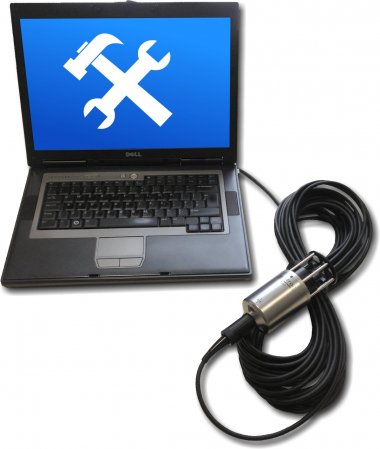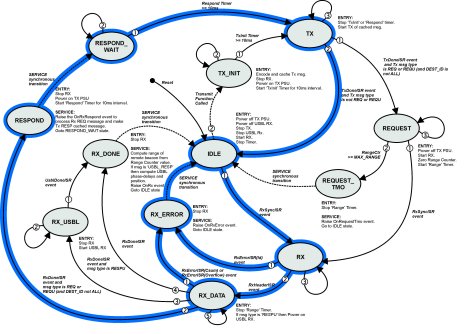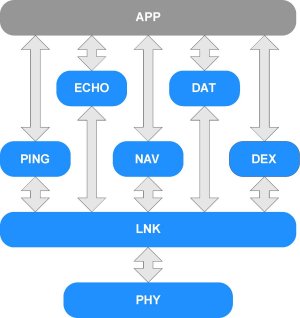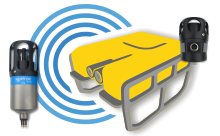 Serial Command Interface
Serial Command Interface
SeaTrac beacons are simple to integrate into systems – Commands are sent to beacons over an RS232 serial link in ASCII encoded characters, allowing control from simple Terminal application to the users own custom software.
Messages start with a synchronisation character (“#”, or “$”) followed by pairs of hexadecimal ASCII characters describing binary 8-bit values for the message command, payload and checksum fields. A Carriage-Return and Line-Feed characters indicate the end of the message.
A comprehensive Developers Guide is freely available to download from this website, detailing the function of all the available commands.
 Sensor Status Output
Sensor Status Output
SeaTrac beacons include several sensors to monitor Pressure, Temperature, Supply Voltage and Attitude (yaw, pitch and roll).
This information along with computed values for Depth and Velocity-Of-Sound is available to the user via the serial link either when manually requested, or at periodic intervals from up to 10Hz.
 Acoustic Transceiver
Acoustic Transceiver
The state-machine driven Acoustic Transceiver forms the core of the SeaTrac beacon and providing the ability to send One-Way or Request/Response messages, handling the transfer, decoding data and validating the integrity of message payloads.
For each message exchange made, in addition to payload data the Transceiver outputs ranging and signal strength information, and for USBL beacons relative positioning information is also available.
 Acoustic Protocol Stack
Acoustic Protocol Stack
SeaTrac beacons aren’t just acoustic modems, as each beacon contains an Acoustic Protocol Stack that provides control over the Transceiver modules.
Similar in concept to an IP stack found on most Ethernet connected devices, the Acoustic Protocol Stack provides system integrators with a wide range functionality, allowing direct control via the serial command interface over the available acoustic protocols, including…
PING |
The simple PING protocol transmits the shortes possible acoustic messages, and provides basic functions to determine if a beacon is available, and obtain its range and relative position. |
ECHO |
The ECHO protocol provides acoustic channel testing and diagnostic functions, allowing packets of data to be sent to a remove beacon and returned back to the sender. |
NAV |
The NAVigation protocol builds on the ranging and positioning capabilities of the beacon to add support for querying remote sensor information, obtaining enhanced position fixes, and broadcasting beacons positions to other users of the network. |
DAT |
Similar in concept to the UDP protocol, The DATagram protocol provides a suite of commands to allow simple packets of data to be sent to a remote beacon, and optionally remote data returned if any is available in the beacons buffer. The protocol forms the basis from which developers can implement their own more complex higher level protocols. Position and ranging information are available for each acknowledgment received. |
DEX |
The Data EXchange protocol impliments a TCP like data transfer capability, including sockets, port numbers, stream buffering, transmission failure and retry functions. |
Enhanced Positioning
USBL beacons compute the relative position of remote beacons using the acoustic signals angle of arrival and the beacons local attitude. However, in addition “Enhanced” positioning is available, where the remote beacon transmits its depth to the USBL head, and this is used to improve vertical positioning, especially in shallow channels or situations where acoustic multi-paths are present.
Software Development
A full interface specification and serial-command reference is available in the SeaTrac Developer Guide for developers wishing to integrate SeaTrac beacons into their own systems. A full list of downloadable resourced is available at the bottom of this page.



